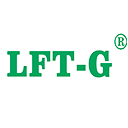(1)モノフィラメント
本来は単穴の口金で紡糸された連続した単繊維を指しますが、実際の用途では、3~6穴の口金で紡糸された3~6本の単繊維からなる少数の穴を有するフィラメントを含むことが多いです。粗い合成繊維のモノフィラメント(直径0.08~2mm)は剛毛と呼ばれ、ロープ、ブラシ、日用メッシュバッグ、漁網、工業用濾布の製造に使用されます。より細い ポリアミド モノフィラメント は、透明な女性用靴下やその他の上質なニットウェアの製造に使用されます
。
(2)複合シルク
数十本の単繊維からなるフィラメント。化学繊維の複合繊維は、通常8~100本の単繊維から構成されています。生地の大部分は複合シルクで作られています。これは、複数の単繊維で構成される複合シルクが、同じ直径の単一のシルクよりも柔軟性が高いためです [23]。
(3)カーテンワイヤー
一般にコードワイヤーとして知られるタイヤコード織物の製造に使用される、百本以上から数百本以上の単繊維で構成される絹ストリップ。
化学繊維を数センチメートルから十数センチメートルの長さに切断した製品を短繊維といいます。異なる切断長さに応じて、ステープルファイバーは綿ステープルファイバー、ウールステープルファイバー、中長ステープルファイバーに分類できます。
(1)綿短繊維
長さは25~38mm、繊維は細く(線密度は1.3~1.7dtex)、綿繊維に似ており、主に綿系ポリエステル短繊維や綿繊維との混紡などの綿繊維との混紡に使用され、得られる生地です。は「ポリコットン」生地と呼ばれます
。
(2)毛髪短繊維
長さ70〜150mm、粗い繊維(線密度3.3〜7.7dtex)、羊毛に似ており、主に羊毛との混紡に使用され、例えば羊毛系ポリエステル短繊維や羊毛との混紡が行われ、得られた生地は「羊毛」と呼ばれます。ポリエステル」生地
(3)中長繊維
長さは51〜76mm、繊維の太さは綿タイプと羊毛タイプの中間にあり(線密度は2.2〜3.3dtex)、主に中長繊維織物を織るのに使用されます。
短繊維は天然繊維や他の化学繊維と混紡することができるため、混紡された生地は優れた総合的な特性を備えています。また、短繊維を純粋に紡績することもできます。世界中の化学繊維の生産において、ステープル繊維の生産量はフィラメント繊維の生産量よりも多くなっています。繊維の特性に応じて、フィラメントを生産するいくつかの品種(ナイロンなど)があります。一部の品種 (アクリル繊維など) は主に短繊維を生成します。ポリエステルなどのいくつかの品種は同様の比率を持っています。
強度が低く、破断伸度が大きく、熱収縮率が強く、染色性が良く、アルカリ還元加工が容易な粗詳細シルク粗断面は、これらの特性を最大限に活かして独特の繊維特性を発現させることができます。粗詳細シルクの物理的特性は、粗詳細の直径比およびその他の要因に関連します。一般的な粗いディテールのフィラメントは、破断点伸びと沸騰水収縮率が高く、破断強度と降伏点が低くなります。その強い収縮特性により、粗大繊維を他の繊維と混合して異収縮混合繊維を形成することができます。さらに、粗いシルクの粗い部分は変形しやすく、織り、染色、仕上げのプロセスで強度が低いという問題に注意する必要があります。初期の粗い詳細シルクは丸いシルクです。粗細シルクの生産技術の発展に伴い、特殊な形状の粗細シルク、混合繊維の粗細シルク、微多孔質の粗細シルク、ファインデニールの粗細シルクなど、いくつかの特殊な粗細シルクが次々に登場しています。それらは特別な感触とスタイルを持っているか、特別な吸収性を持っており、主に高級生地の開発に使用されています。
差別化化学繊維メンテナンスとは、日本で生まれた外来語で、一般に繊維材料の物理的変形または化学的修飾に基づいたオリジナルの化学繊維を指し、外観や内部品質において通常の化学繊維とは明らかに異なります。ディファレンシャルファイバーは化学繊維の性能やスタイルを向上させるだけでなく、高吸水性、導電性、高収縮、染色性などの新たな機能や特性を化学繊維に与えます。ディファレンシャルファイバーは主にシミュレーション効果、快適性、保護性を向上させるために使用されるため、主にウール、リネン、シルクなどの摩耗用テキスタイルの開発に使用され、一部は装飾用テキスタイルや工業用テキスタイルの開発にも使用されます。 98
繊維断面には混合しないポリマーが2種類以上存在します。この化学繊維は複合繊維または複合繊維と呼ばれます。繊維に含まれる 2 つ以上の成分が相互に補完するため、複合繊維の性能は通常、従来の合成繊維よりも優れており、多くの用途に使用されています。
複合繊維には多くの種類があり、その形態により二層タイプと多層タイプに分類されます。二層タイプには平行タイプ、スキンコアタイプがあり、多層タイプには平行多層タイプ、ラジアルタイプ、マルチコアタイプ、木目タイプ、埋め込みタイプ、海島タイプ、分割タイプがある。
単繊維の太さは生地の性能に大きな影響を与えるため、化学繊維も単繊維の太さ(線密度)に応じて分類することができ、一般に従来の繊維、ファインファイバー、マイクロファイバーに分けられます。繊維が非常に細い。
1980 年代後半に日本で登場した新しい合成繊維は、ピーチ レザーや超微粒子パウダーのハンドルなど、斬新でユニークな超自然的なスタイルと質感で世界中で人気を博しました。新しい合成繊維は、重合、紡績、織り、染色、仕上げ、縫製などの段階で新しい改質と複合技術を採用しており、天然繊維の一種であり、合成繊維は以前の新しい繊維材料とは比較できません。新複合繊維はその商品形態に応じて、主に超ふわふわタイプ、超ドレープタイプ、超極細タイプなどがあります。その感触に応じて、シルク感触、ピーチスキン感触、超微粒子感触、ニューウール感触に分けることができる。
